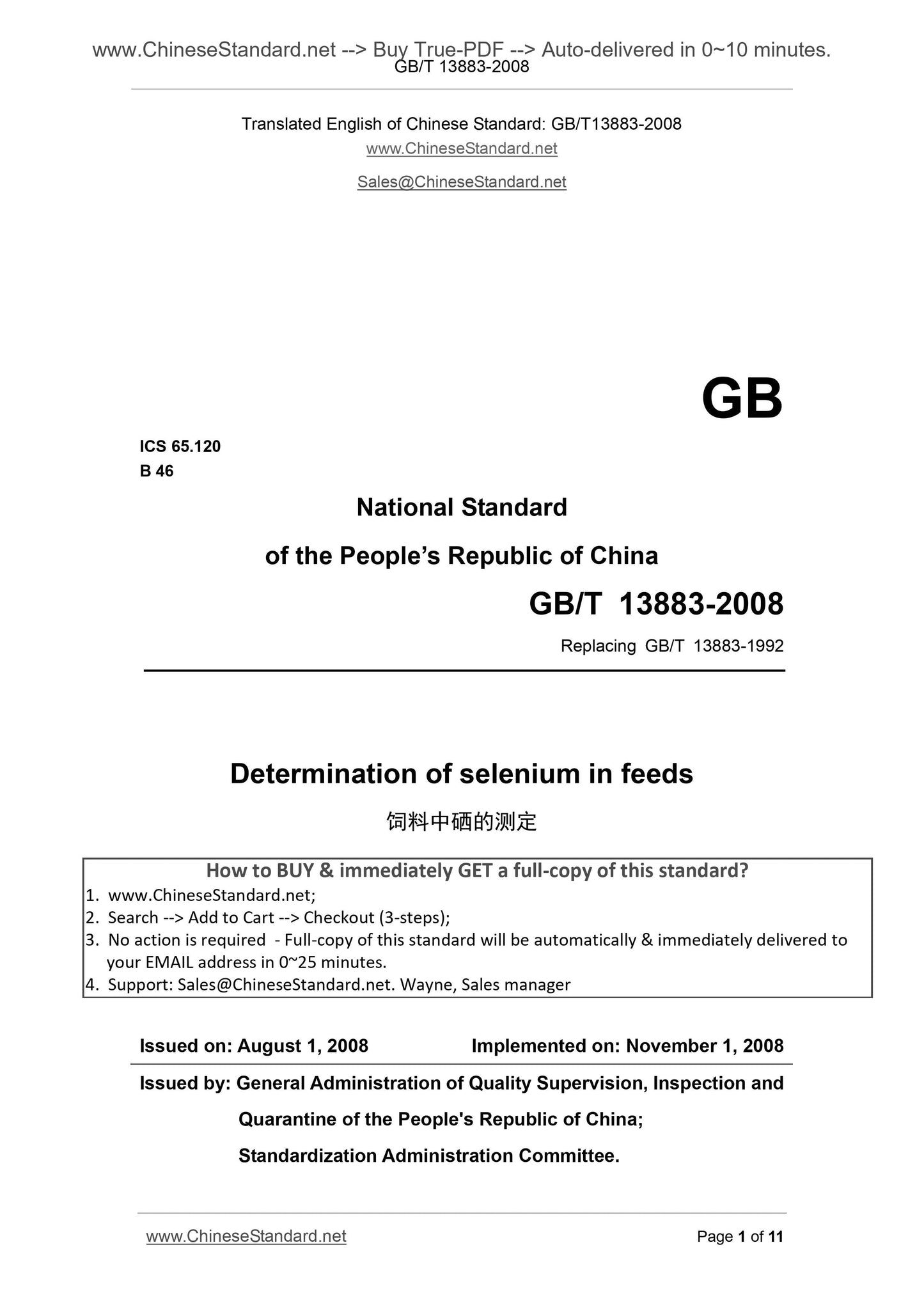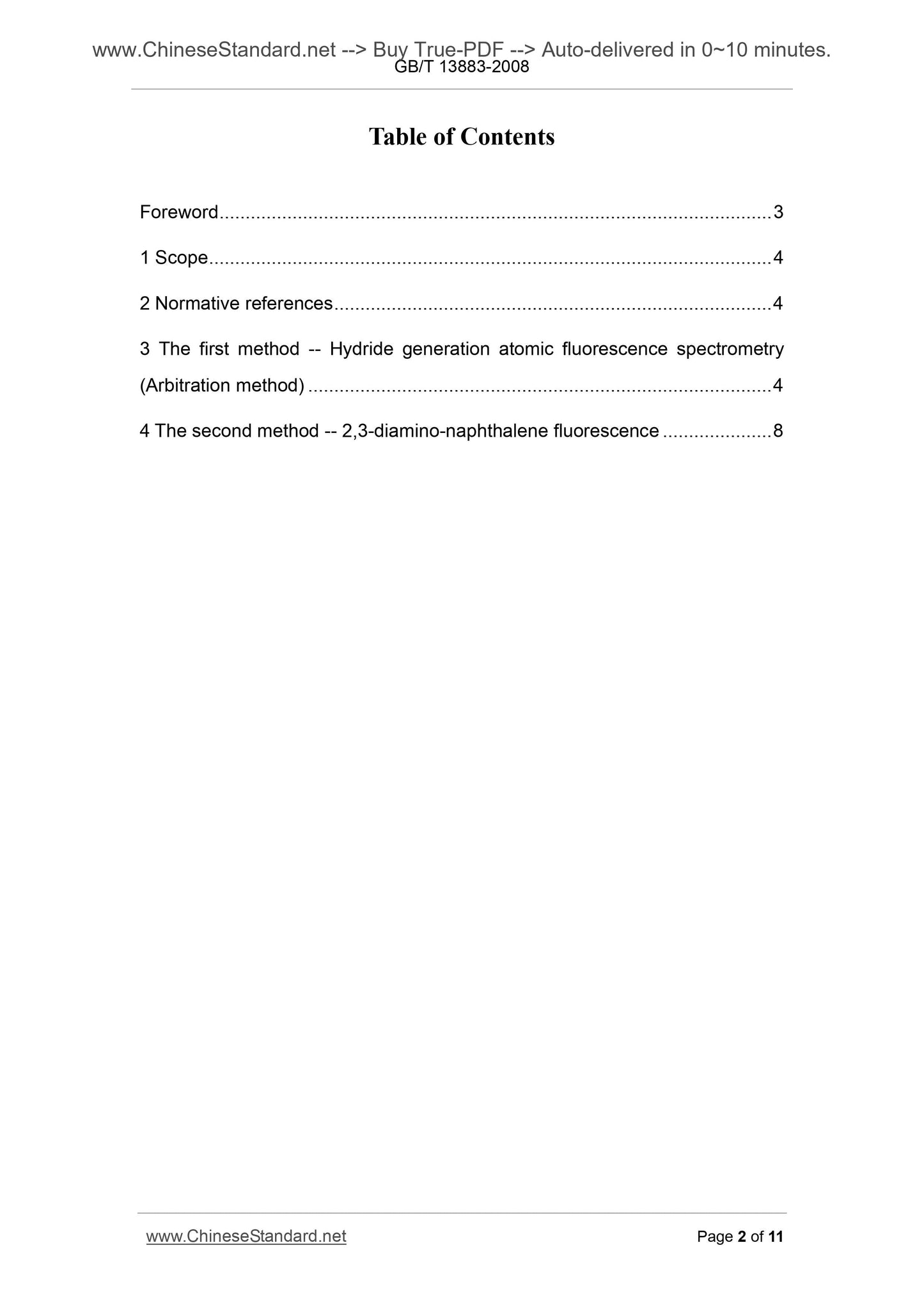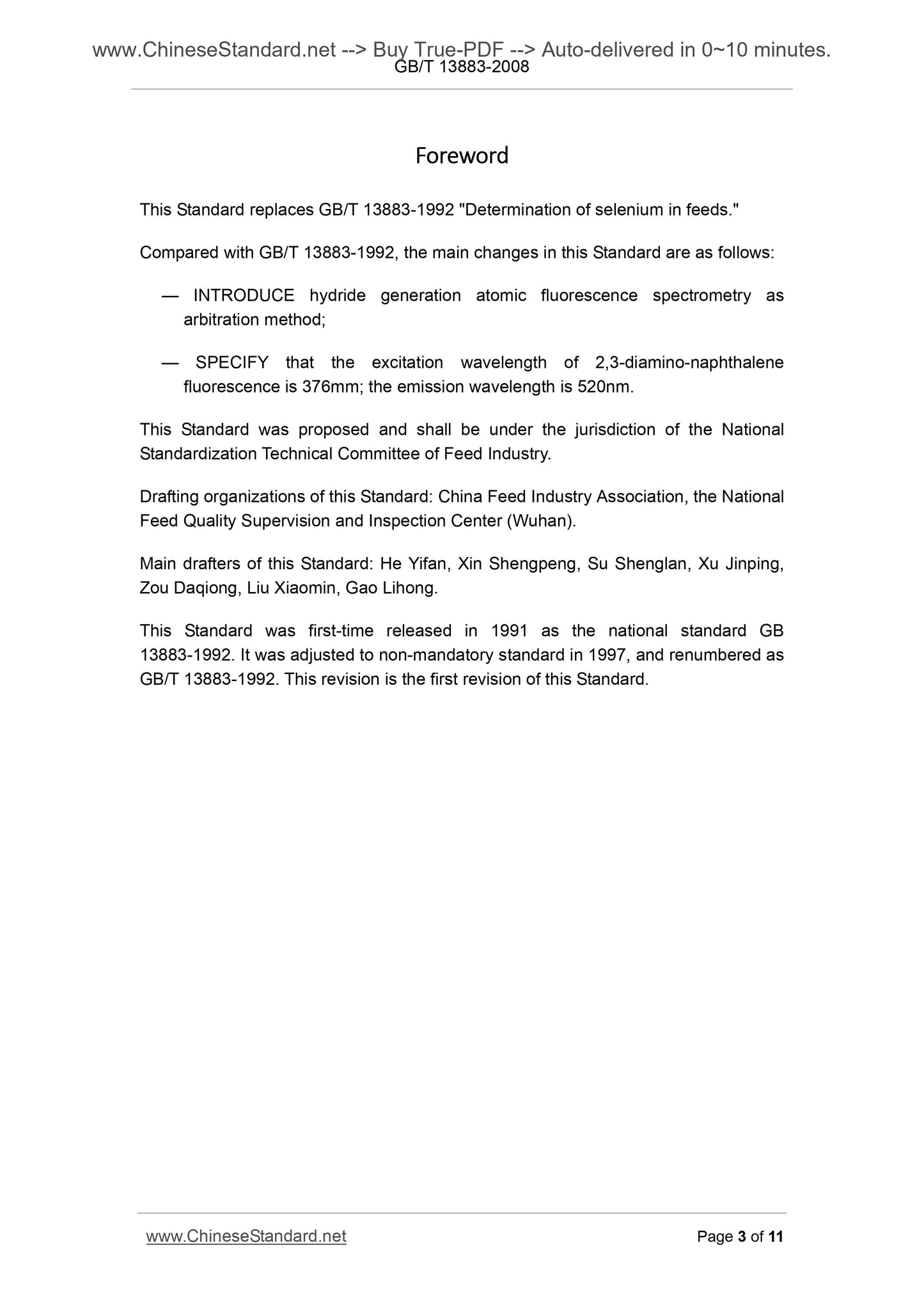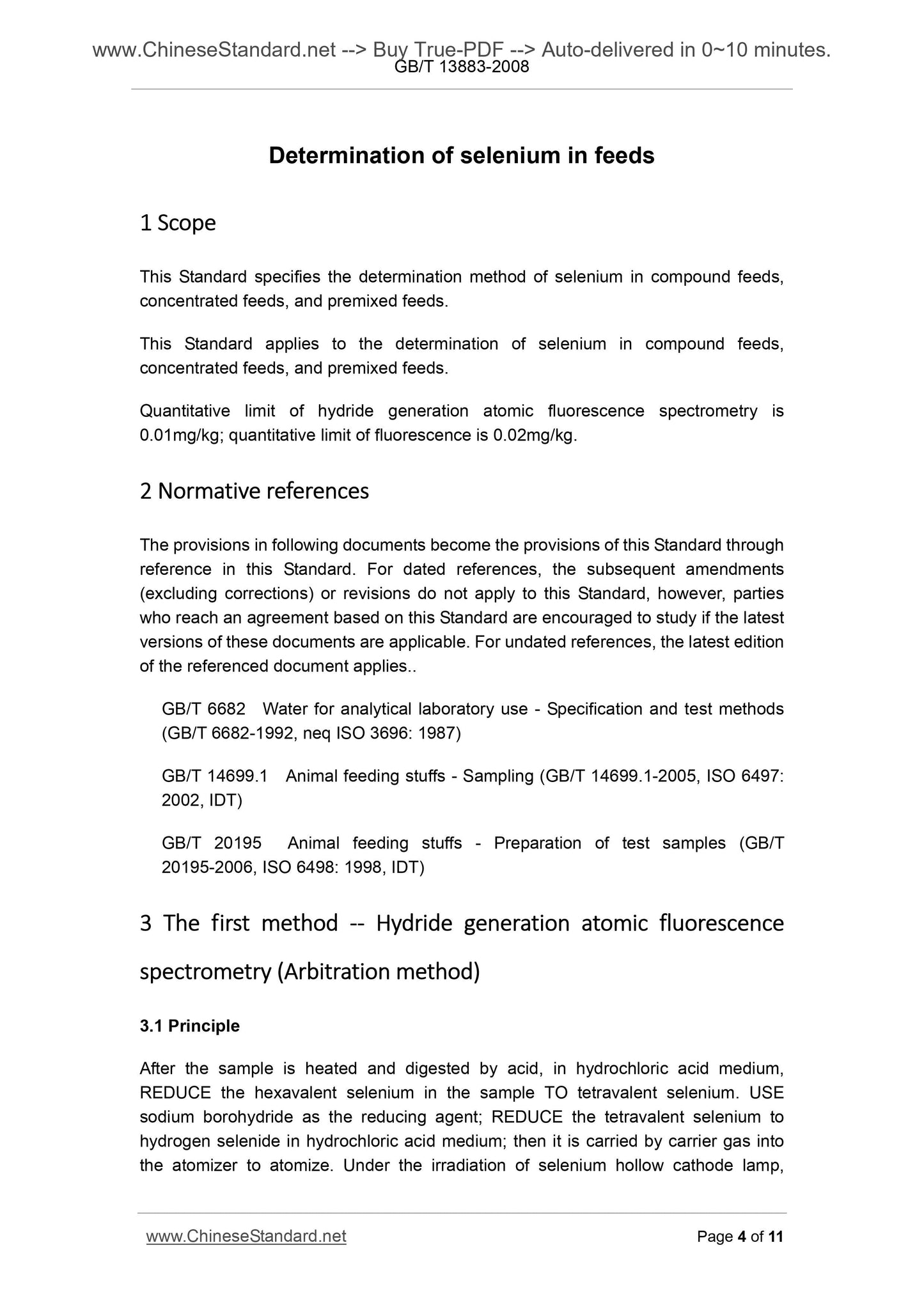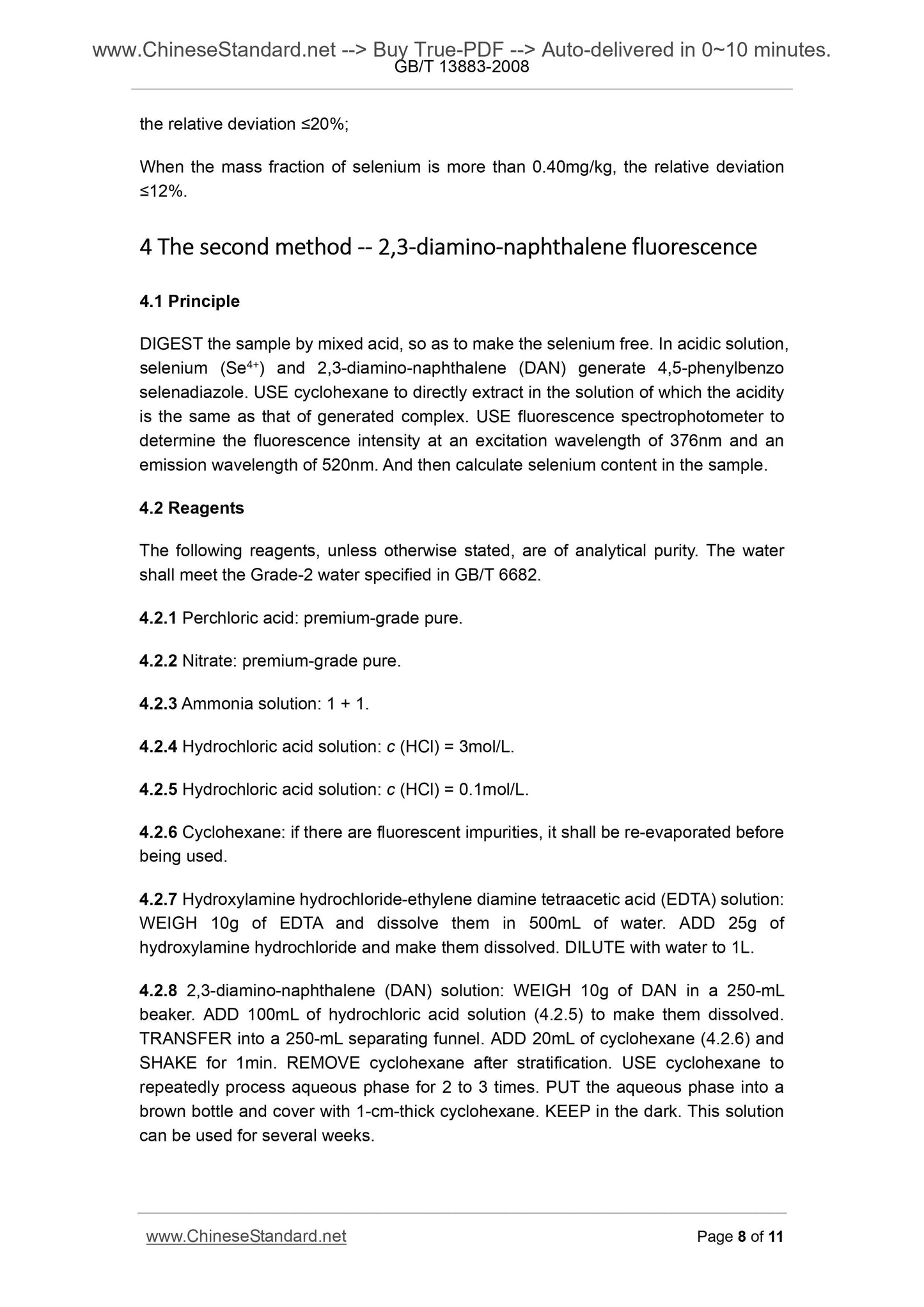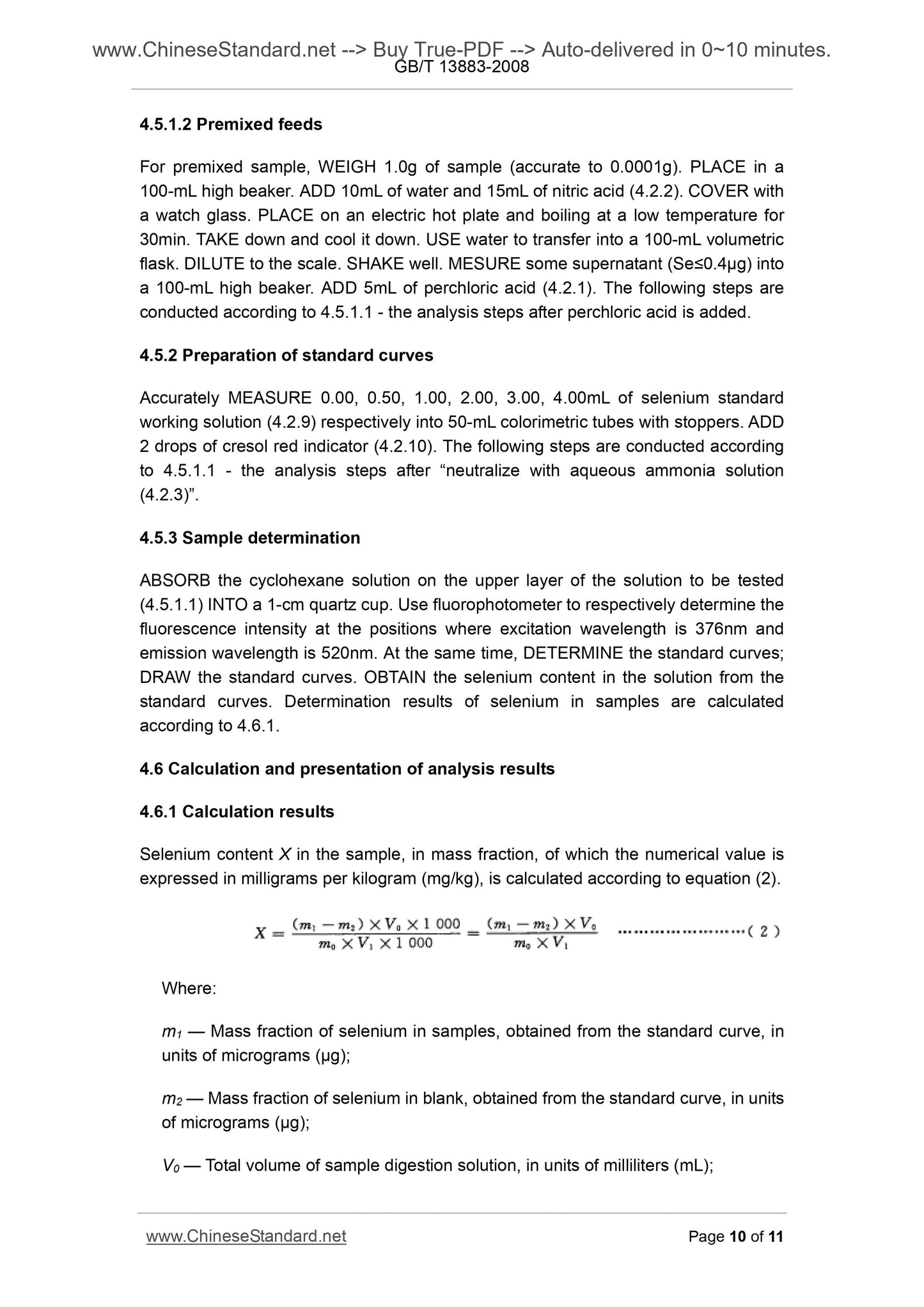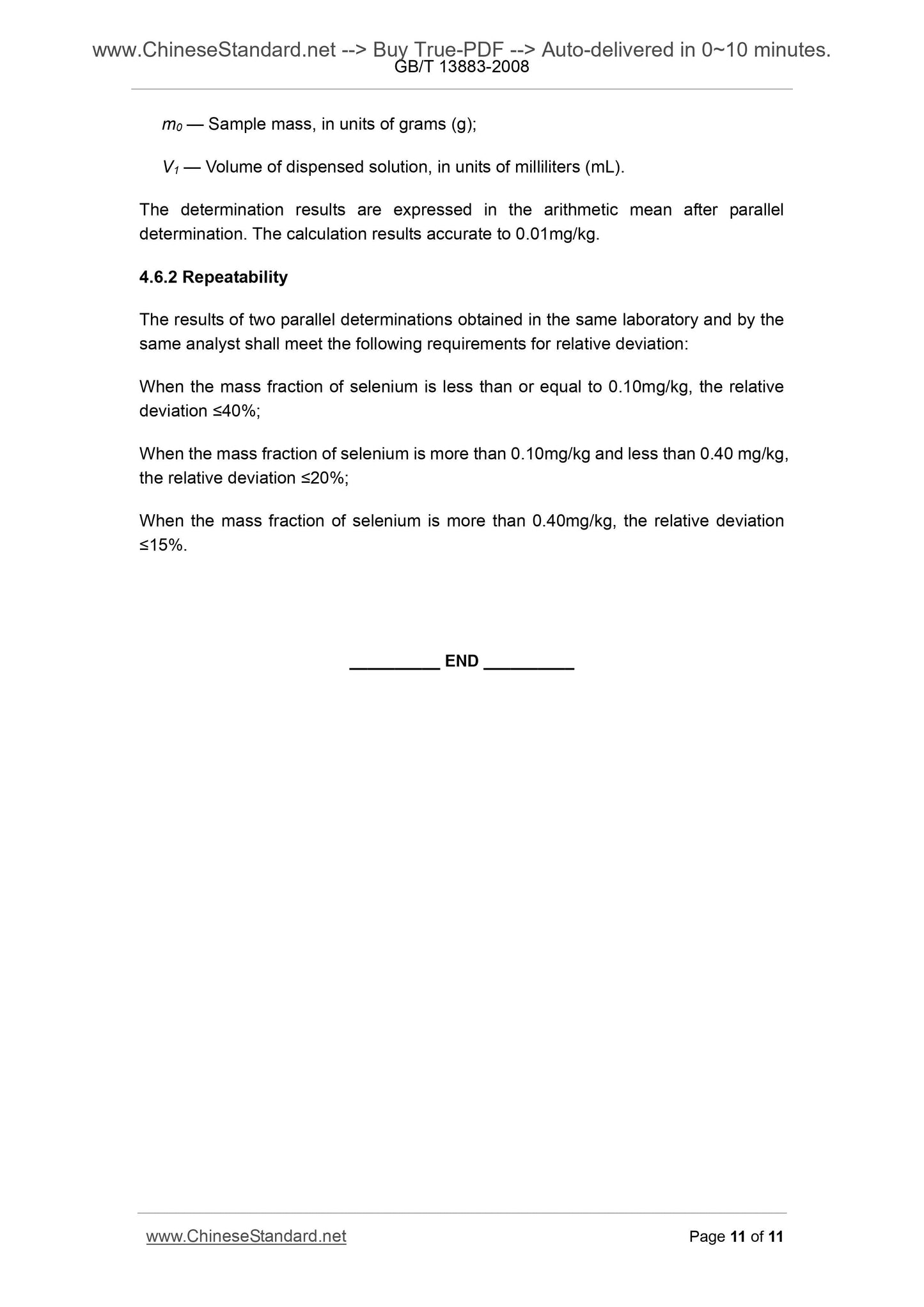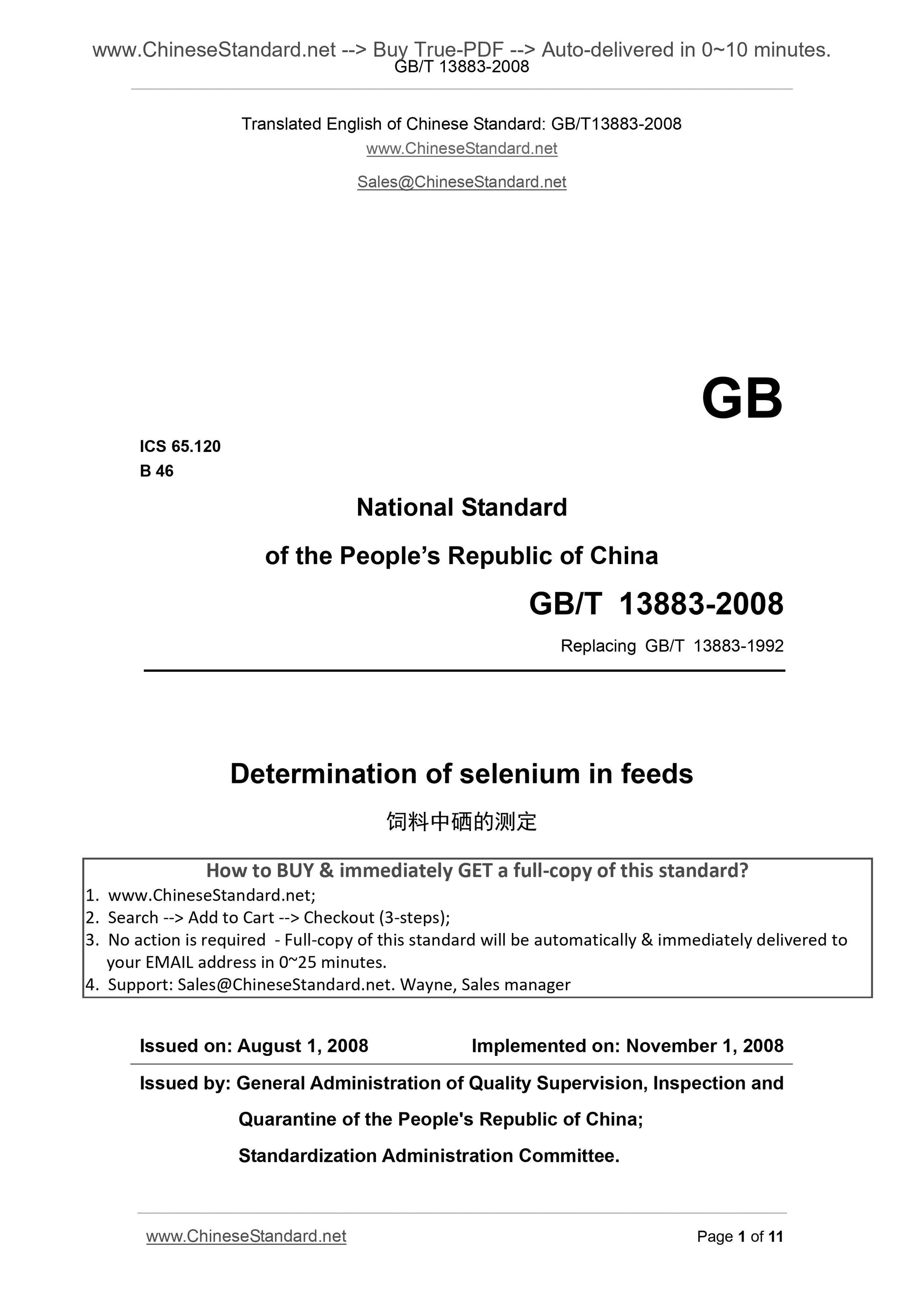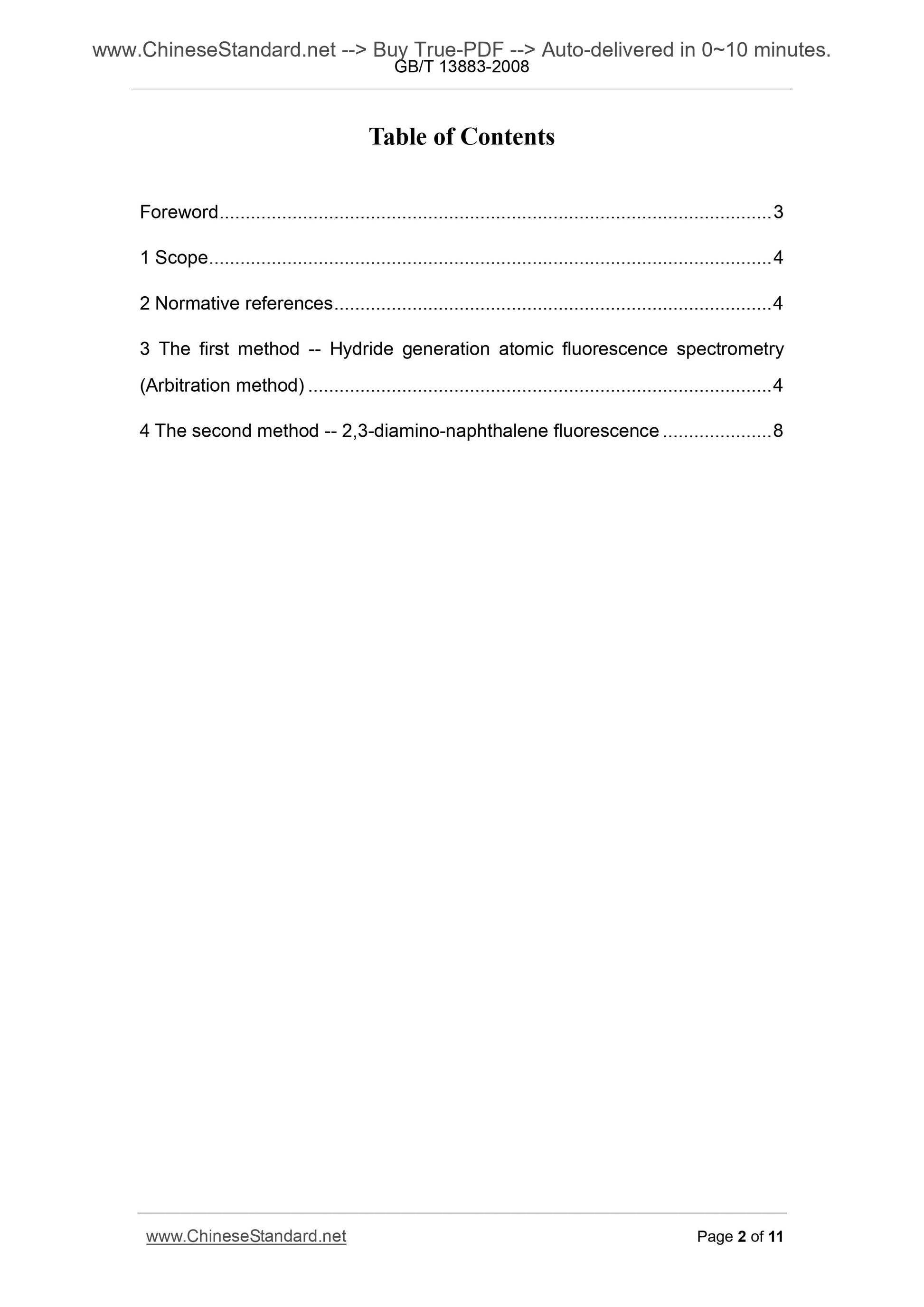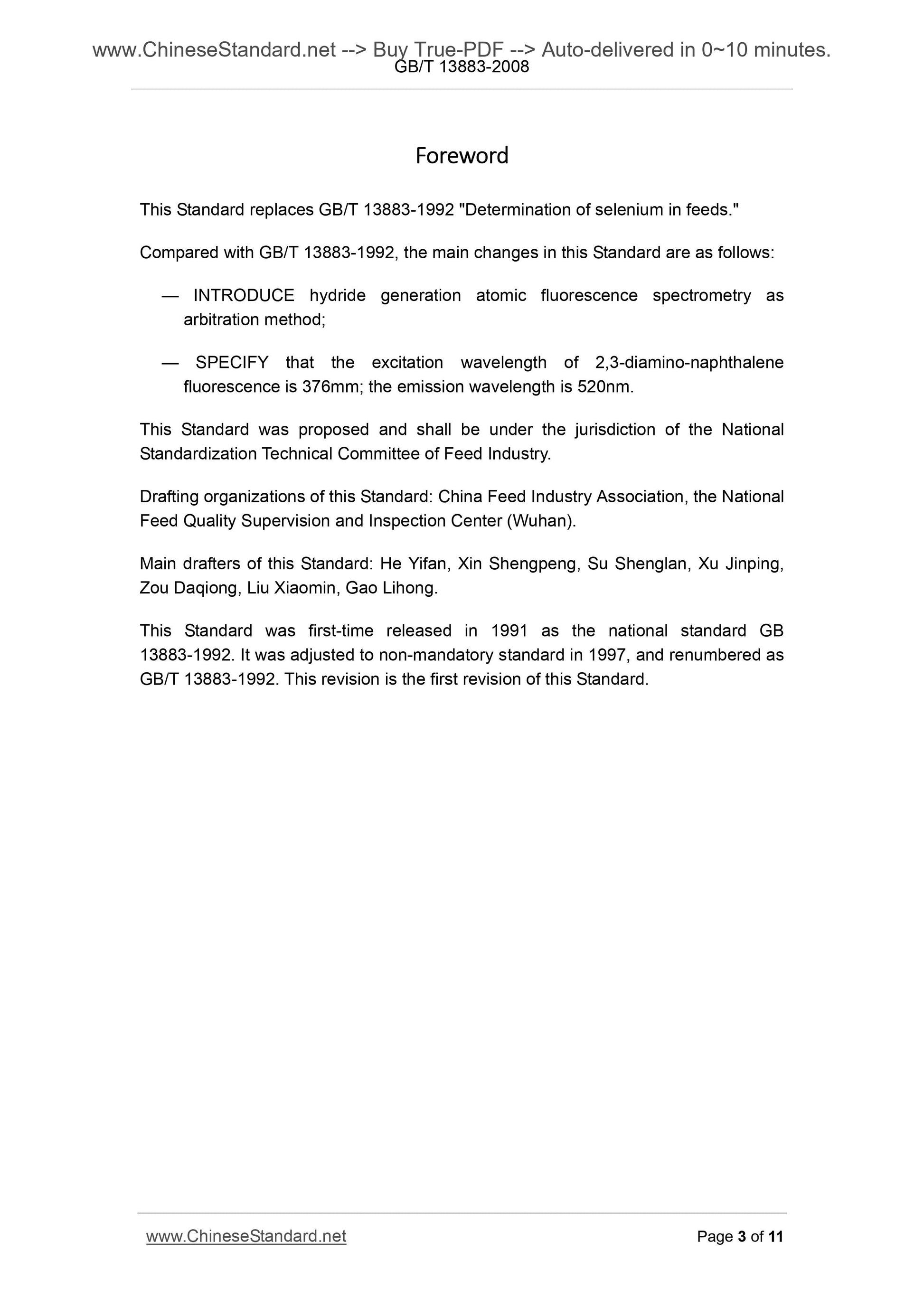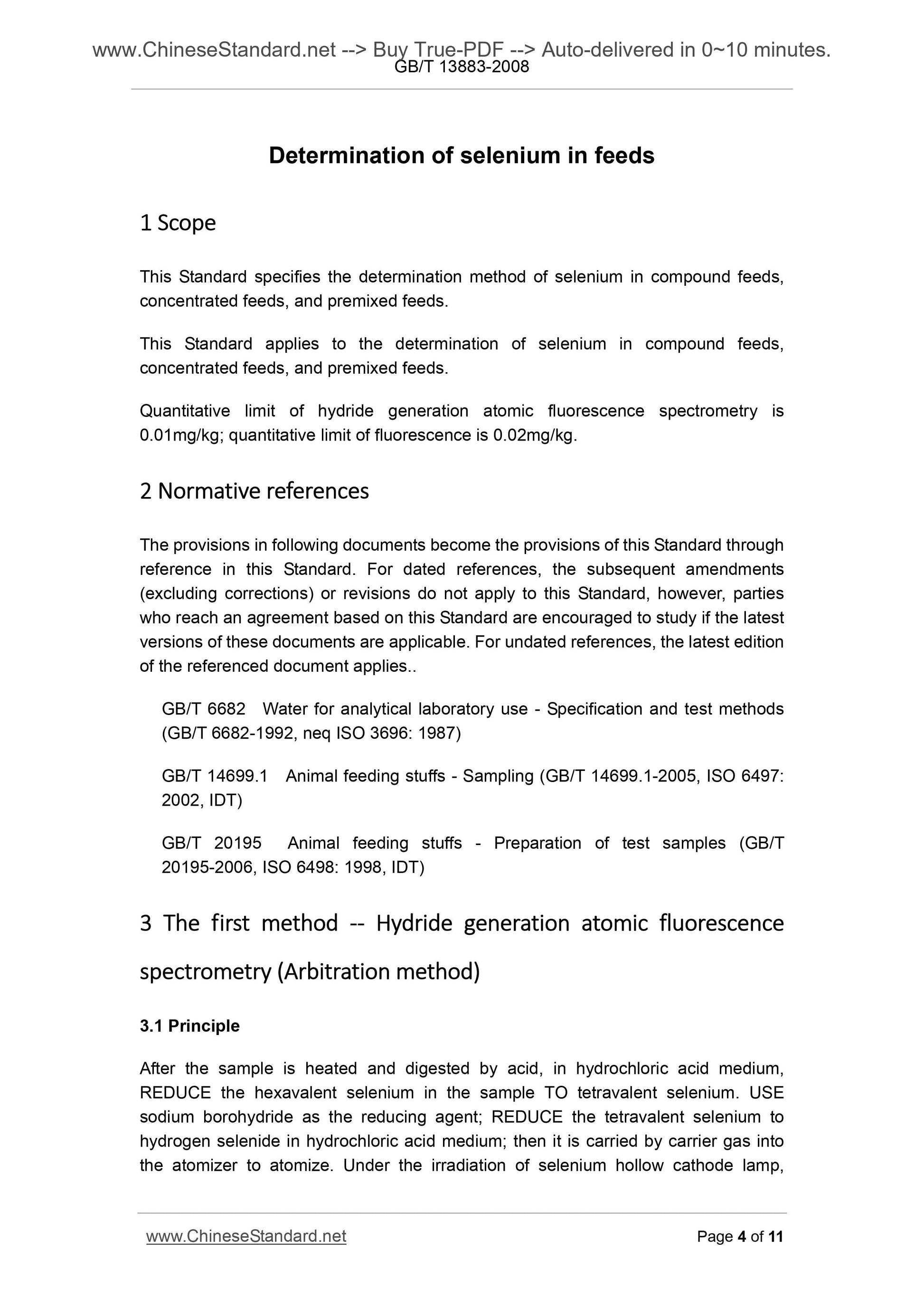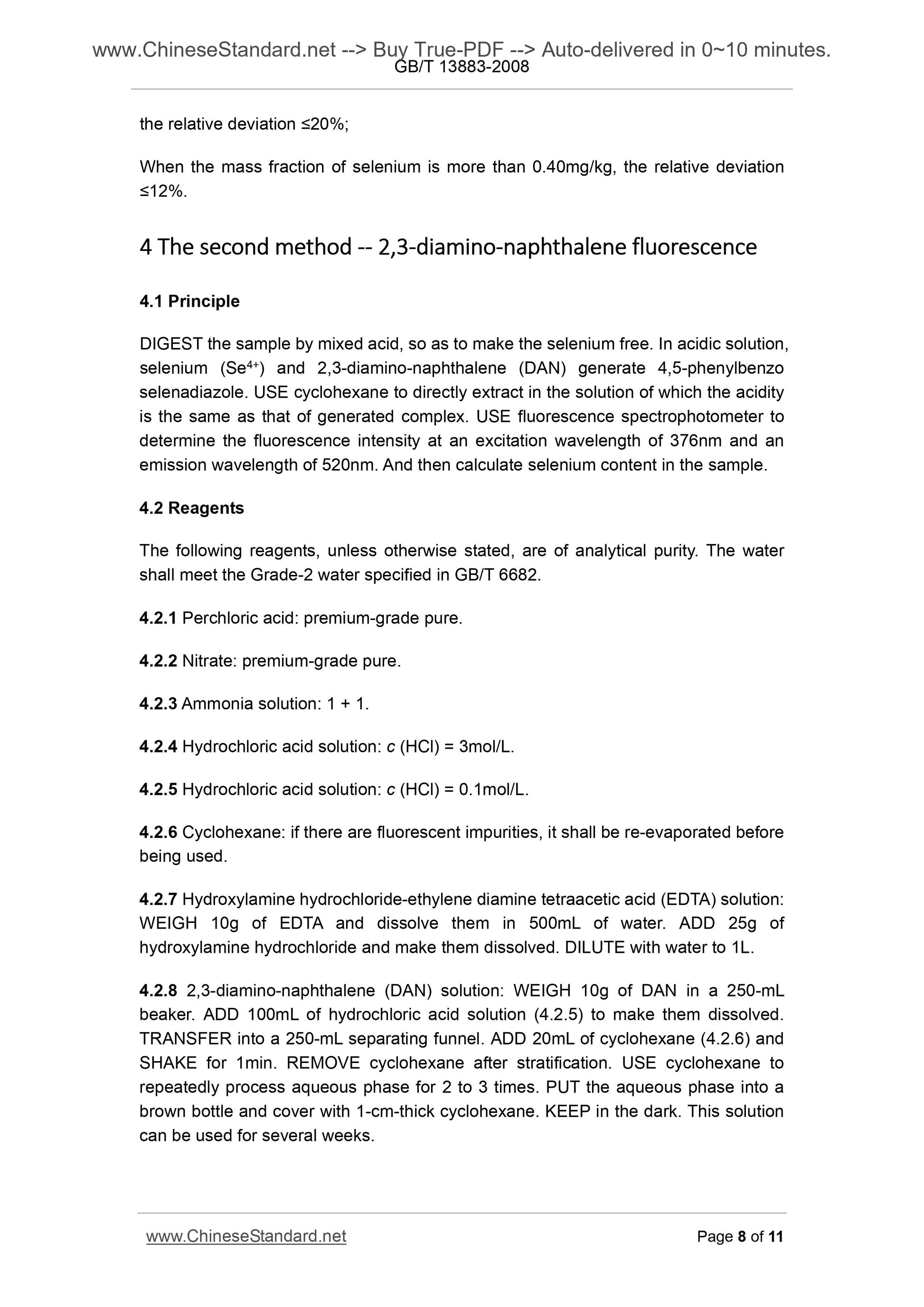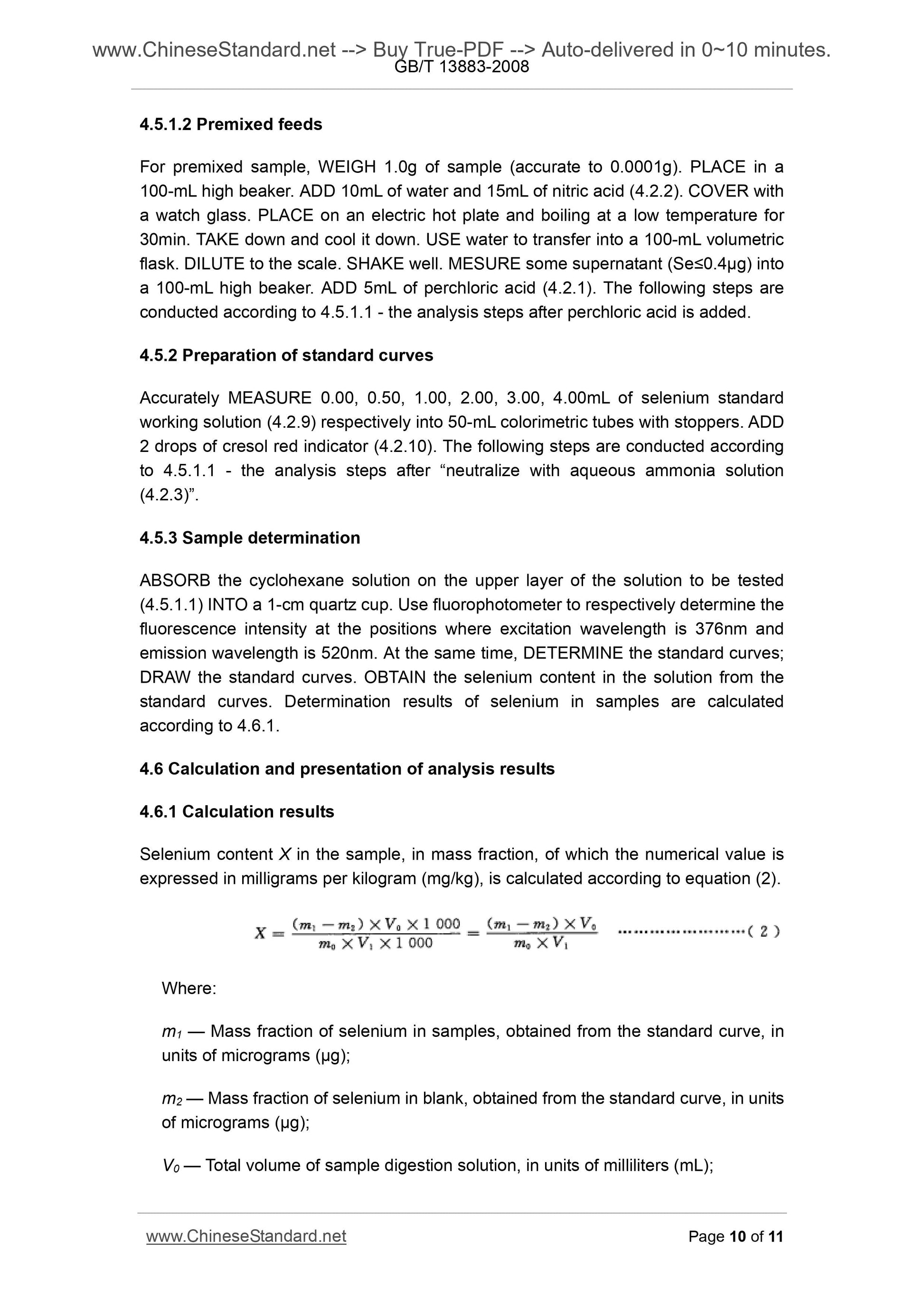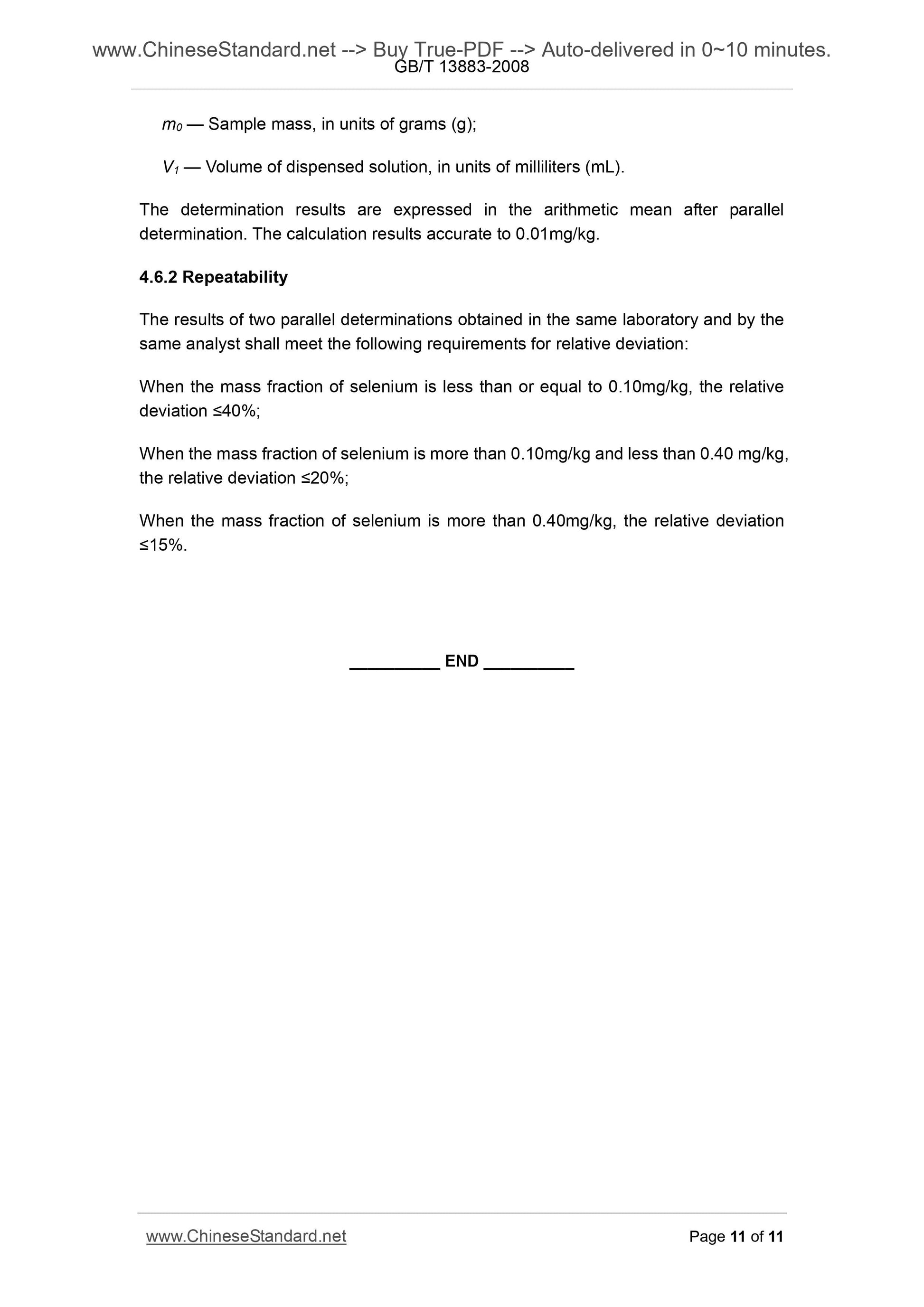1
/
of
7
PayPal, credit cards. Download editable-PDF and invoice in 1 second!
GB/T 13883-2008 English PDF (GB/T13883-2008)
GB/T 13883-2008 English PDF (GB/T13883-2008)
Regular price
$85.00
Regular price
Sale price
$85.00
Unit price
/
per
Shipping calculated at checkout.
Couldn't load pickup availability
GB/T 13883-2008: Determination of selenium in feeds
Delivery: 9 seconds. Download (and Email) true-PDF + Invoice.Get Quotation: Click GB/T 13883-2008 (Self-service in 1-minute)
Newer / historical versions: GB/T 13883-2008
Preview True-PDF
Scope
This Standard specifies the determination method of selenium in compound feeds,concentrated feeds, and premixed feeds.
This Standard applies to the determination of selenium in compound feeds,
concentrated feeds, and premixed feeds.
Quantitative limit of hydride generation atomic fluorescence spectrometry is
0.01mg/kg; quantitative limit of fluorescence is 0.02mg/kg.
Basic Data
| Standard ID | GB/T 13883-2008 (GB/T13883-2008) |
| Description (Translated English) | Determination of selenium in feeds |
| Sector / Industry | National Standard (Recommended) |
| Classification of Chinese Standard | B46 |
| Classification of International Standard | 65.120 |
| Word Count Estimation | 7,767 |
| Date of Issue | 2008-08-01 |
| Date of Implementation | 2008-11-01 |
| Older Standard (superseded by this standard) | GB/T 13883-1992 |
| Quoted Standard | GB/T 6682; GB/T 14699.1; GB/T 20195 |
| Regulation (derived from) | National Standard Approval Announcement 2008 No.12 (Total No.125) |
| Issuing agency(ies) | General Administration of Quality Supervision, Inspection and Quarantine of the People's Republic of China, Standardization Administration of the People's Republic of China |
| Summary | This standard specifies the feed, concentrated feed and premix feed determination of selenium. This standard applies to feed, determination of feed and premix feed selenium concentration. Hydride generation atomic fluorescence spectrometry for quantitative limit 0. 01 mg/kg, fluorescence quantitative limit of 0. 02 mg/kg. |
Share
